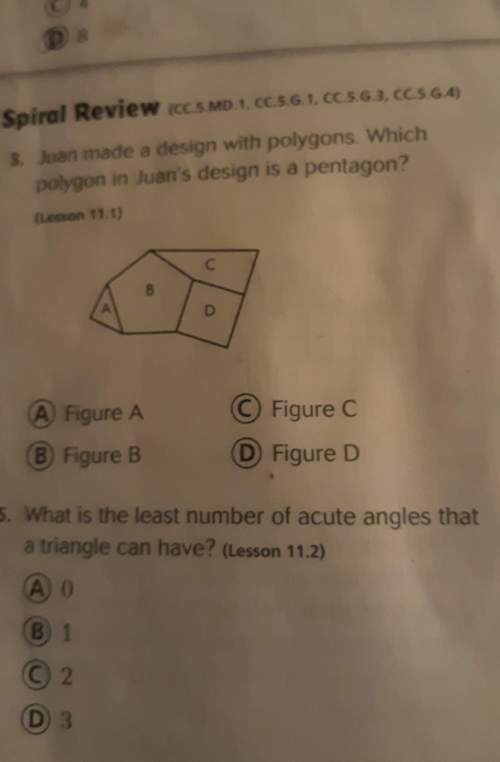
Mathematics, 03.06.2021 14:50 bxbykyah
Which of the following represents the translation of A(1,−2) along the vector <−3, 2> and then the vector <0, −4>?
A (1, −2) → A ′(−2, 0) → A ″(−2, −4)
A (1, −2) → A ′(−2, 0) → A ″(−6, 0)
A (1, −2) → A ′(−3, −4) → A ″(0, −16)
A (1, −2) → A ′(3, −5) → A ″(3, −9)

Answers: 3


Another question on Mathematics

Mathematics, 20.06.2019 18:02
Show me how you find the value of each variable and determine what the value of each variable is you i appreciate it : )
Answers: 3

Mathematics, 20.06.2019 18:04
Click an item in the list or group of pictures at the bottom of the problem and, holding the button down, drag it into the correct position in the answer box. release your mouse button when the item is place. if you change your mind, drag the item to the trashcan. click the trashcan to clear all your answers. using the technique in the model above, find the missing segments in this 30°-60°-90° right triangle. ab = 8 bc = 4 cd =
Answers: 3

Mathematics, 21.06.2019 13:00
The polygon tool to draw a rectangle with a length of 5 units and a height of 3 units. one of the sides of the rectangle falls on line ab , and the rectangle has a vertex of a. each segment on the grid represents 1 unit.
Answers: 1

Mathematics, 21.06.2019 16:20
Consider the function y = f(x)=3^x the values of f(1/2) and f(1/4). rounded to the nearest hundredth, are__and__ respectively
Answers: 3
You know the right answer?
Which of the following represents the translation of A(1,−2) along the vector <−3, 2> and then...
Questions

Social Studies, 07.12.2019 11:31



Mathematics, 07.12.2019 11:31



Social Studies, 07.12.2019 11:31

Mathematics, 07.12.2019 11:31

Business, 07.12.2019 11:31



Biology, 07.12.2019 11:31


Social Studies, 07.12.2019 11:31

Physics, 07.12.2019 11:31





English, 07.12.2019 11:31




